Recently a couple of pieces of audio processing equipment I’ve bought used have had bad left channels. After recognizing the pattern, I finally thought to swap out the patch cord I had left plugged into the “test” channel on my keyboard mixer, and voila! Left channels fixed.
I’ve always been curious about the construction quality of commercial patch cords — just how good are the connections buried under those lovely molded jackets and strain reliefs?
Naturally, the faulty end was the last one I disassembled. (Logic joke!)
A failure rate of one in twenty-fivish (I have three bundles of patch cords) is quite a bit higher than I expected, especially as the fault was a solder joint broken clear off of the center pin.
Notice how little of the braided shield wire remains. This doesn’t speak well to the overall quality and reliability of the patch cords — even though this part of the wire is cast inside the rubber housing and can’t flex.
Note also that the cable has two signal wires. The manufacturer apparently uses the same cable for TS (tip-shield, for unbalanced signals) patch cords as they do for TRS (tip-ring-shield, for balanced signals) patch cords. (The same bulk cable could be used for stereo unbalanced transmission — although I’d prefer to see each signal wire individually coaxially shielded.)
At this point, my curiosity shifted to whether I could fix up the cable and put it back together in a way that I found aesthetically acceptable.
When I mounted the plug to desolder the braid so I could strip back the jacket and start with fresh sections of copper, I noticed that the solder was very grey. I suspect it’s lead-free and I suspect that the greater challenges of lead-free solder contributed to the broken solder joint.
I reformed and tinned the shield wire and stripped and tinned the tip wires. I also tinned the shield and pin so the joints would go together well — which they did. And I tested for continuity and shorts after soldering, to be sure of my rework.
I slipped the broken pieces of insulating plastic back between the wires so the shield wires wouldn’t short out onto the pins. I then carved out the interior of the molded jackets, since I wasn’t going to be able to realign the insulation and wires exactly with the recesses from when the housings were originally formed.
After test-fitting and carving out more of the molded covers a few times, I got a fit I was happy with. I put the covers back on and sealed the deal with heat-shrink, which did an admirable job of conforming to the shape and texture of the original molding.
Making the repair was never an economic decision; but having fixed the patch cord, I may as well use it.
Who Made It?
I could never find a manufacturer’s logo on the patch cord or molded ends, nor does the cord look identical to the current catalog entry for the patch cord bundle I think it is. I’ll avoid buying anything more from the brand I suspect; but because I’m not certain of it, I’m not comfortable mentioning it here.
It’d make an interesting demonstration to buy a couple of packages each of several manufacturers’ patch cords and dissassemble and inspect them like this, to assess the build quality. Maybe a musicians magazine has already done that review?
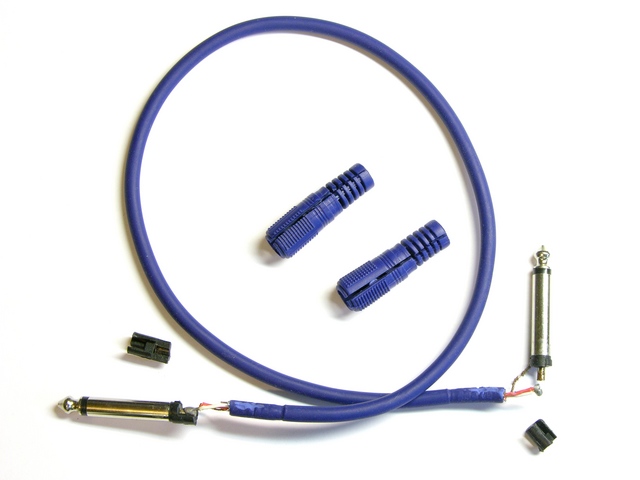
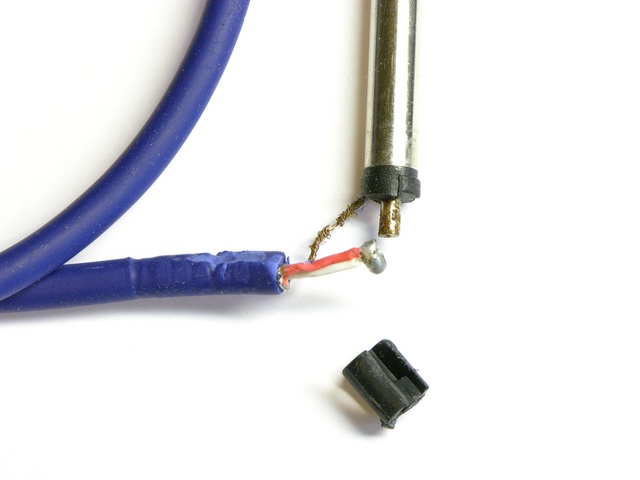
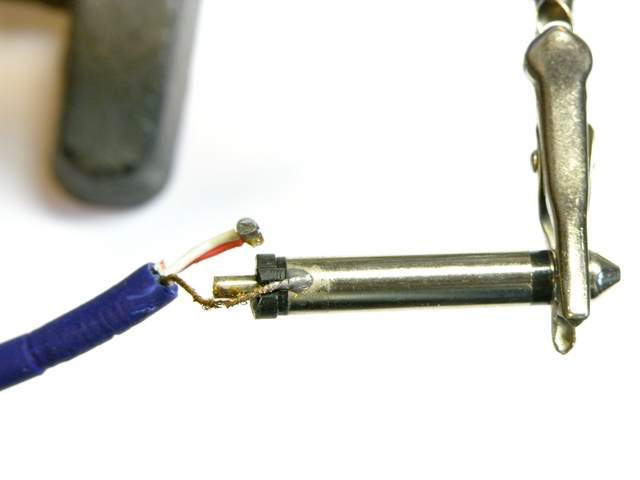
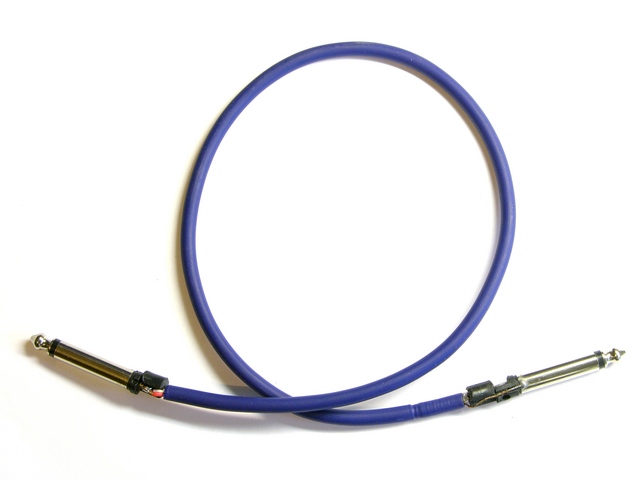
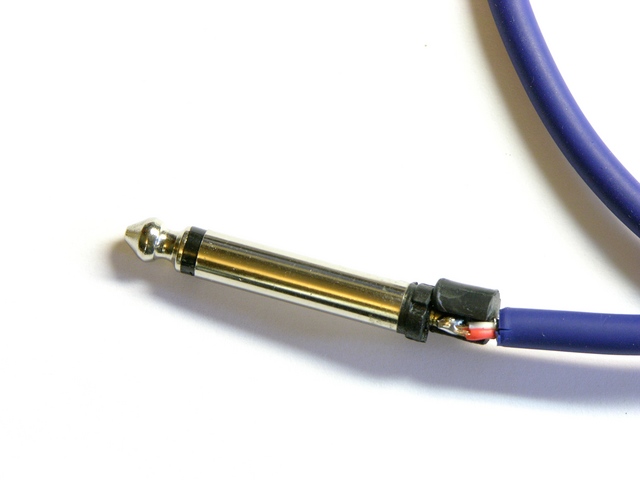
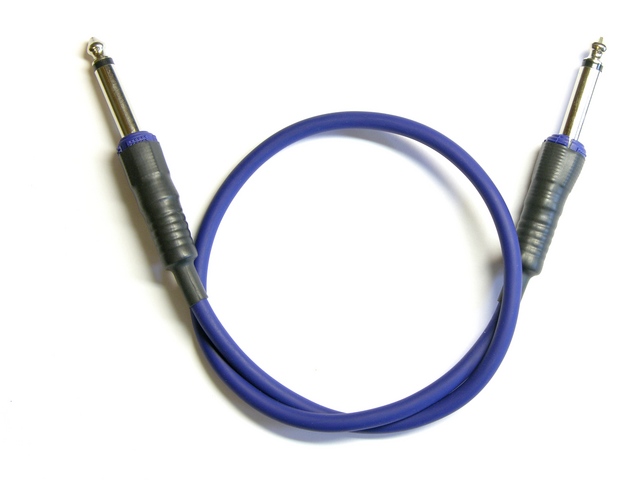
Chinese people made it, by hand, so the quality varies from one to the next.
… and that’s the manufacturer’s chosen production mechanism, so I’m now leery of their quality.
… and they don’t electrical test before shipping.
I spent years as a quality engineer at an audio company (i’m now a mechanical designer at the same place) i can tell you that most audio cables out there are pretty sad things.
complete commodity and and they make them by the mile. I’ve tested supplier submissions just to see terrible workmanship and horrible material consistency and control.
best quality i’d have to say is mogami stuff, but unfortunately i think it is priced accordingly. also, i heard that it is owned and run by one old japanese guy, and once he kicks the bucket, who knows what will happen.
if you need patch cables in any sort of quantity, i’d recommend buying some cable in bulk, and getting some decent quality connectors (with screw on housings, like amphenol, switchcraft, etc.) and make them to custom lengths. it will also make your eventual repairs (no cable will last forever) much easier.
never costed it out, but you would likely save money in the long run.
My brother plays electric guitar and had a large selection of similar cables that he would use between the guitar, amp, pedals and various other gear. He had everything from high-ends brands to low end cheap Chinese stuff and none of it really lasted.
I quickly found that it was cheaper to buy a pack of nice gold plated (or similar quality) screw on housing connectors and replace the standard connectors as they broke.
They still break eventually but tend to last much longer and have the advantage that when they do break its often possible to unscrew and re-solder the connector.
+1 for making your own.
In my experience with audio cables of all kinds, you can either buy cheap junk or over-priced quality. I prefer to buy decent jacks in bulk and make cables up as I need them. This works out marginally cheaper, but the main advantage is that I know who to be upset with when the cable fails! Also you can optimise your setup, mix and match colours, lengths, right-angles, Y-splitters, inline preamps…
If you’re going to a comparison of manufacturers’ build quality, get out the callipers too and see how the worst ones save on material cost by making the jacks fractionally too small and narrow. It’s outrageous!
I’m in with the pack on this one. It’s always baffled me; men on the moon, open heart surgery on the newborn … but we seem incapable of making a patch cord or a guitar lead that lasts more than a few months.
This is an old thread, but I thought you might be interested in this well done comparison of budget microphone cables.
http://www.danielcash.com/xlr